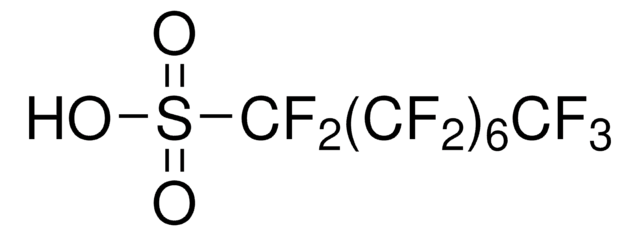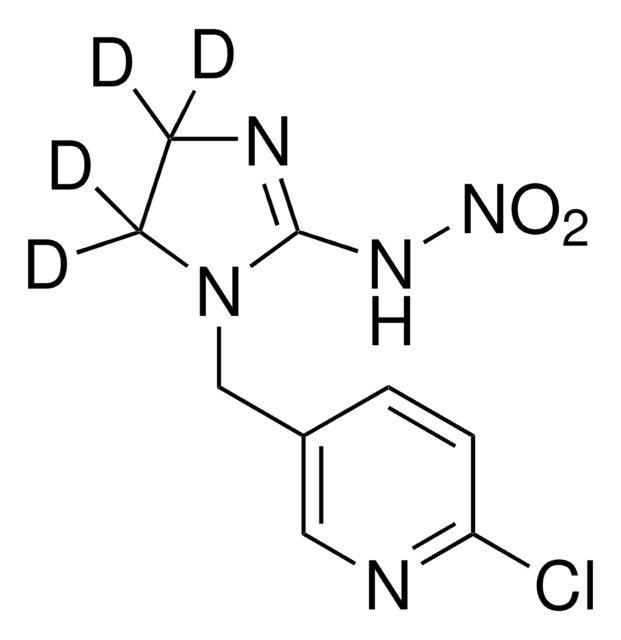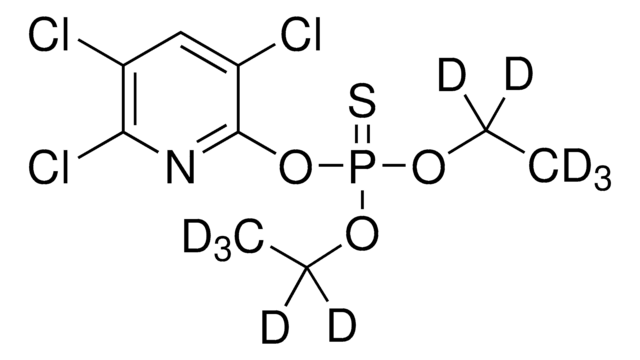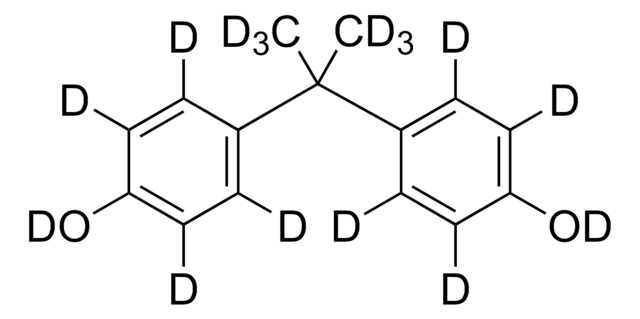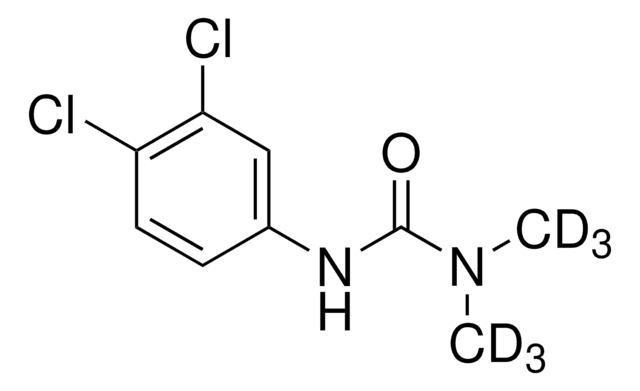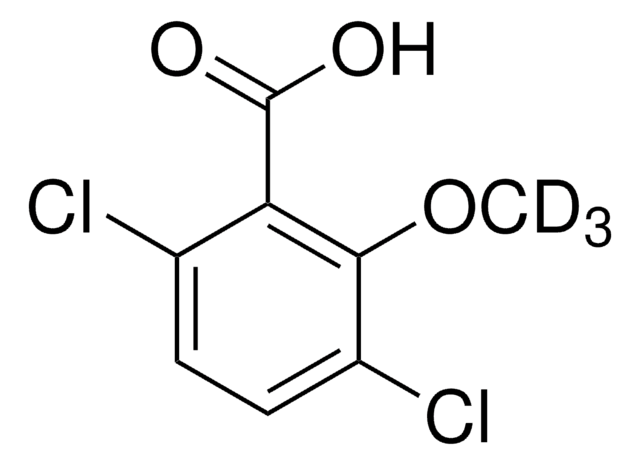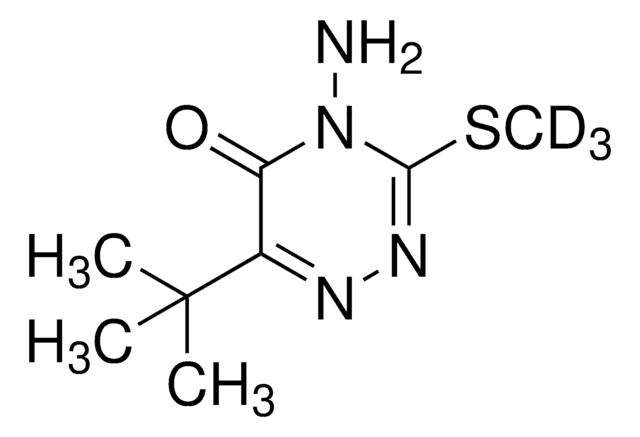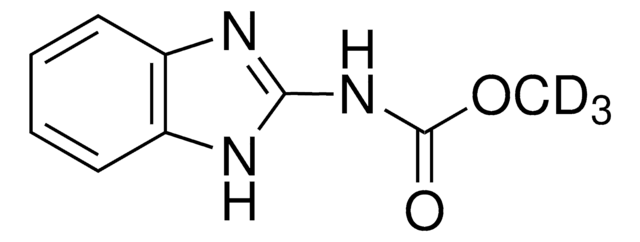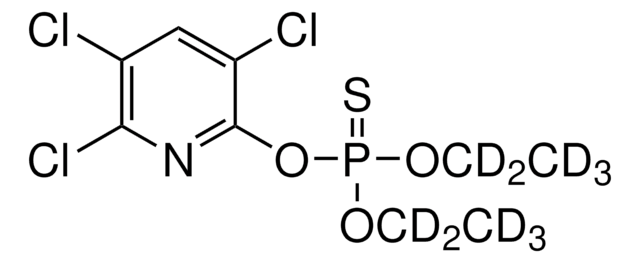Kluczowe dokumenty
34053
Atrazine-d5
PESTANAL®, analytical standard
Synonim(y):
2-Chloro-4-pentadeuteroethylamino-6-isopropylamino-1,3,5-triazine
About This Item
Polecane produkty
klasa czystości
analytical standard
Poziom jakości
linia produktu
PESTANAL®
okres trwałości
limited shelf life, expiry date on the label
metody
HPLC: suitable
gas chromatography (GC): suitable
Zastosowanie
agriculture
environmental
Format
neat
przesunięcie masy
M+5
ciąg SMILES
[2H]C([2H])([2H])C([2H])([2H])Nc1nc(Cl)nc(NC(C)C)n1
InChI
1S/C8H14ClN5/c1-4-10-7-12-6(9)13-8(14-7)11-5(2)3/h5H,4H2,1-3H3,(H2,10,11,12,13,14)/i1D3,4D2
Klucz InChI
MXWJVTOOROXGIU-SGEUAGPISA-N
Opis ogólny
Zastosowanie
determination of atrazine in water and soil samples using isotope dilution gas chromatography coupled with mass spectrometry.
Atrazine-d5 may also be used as an internal standard for the estimation of atrazine in water samples using solid-phase extraction and polar organic chemical integrative samplers (POCIS) followed by liquid chromatography with electrospray ionization-tandem mass spectrometry.(LC-ESI-MS/MS).
Informacje prawne
produkt powiązany
Hasło ostrzegawcze
Warning
Zwroty wskazujące rodzaj zagrożenia
Zwroty wskazujące środki ostrożności
Klasyfikacja zagrożeń
Aquatic Acute 1 - Aquatic Chronic 1 - Skin Sens. 1 - STOT RE 2 Oral
Organy docelowe
Heart
Kod klasy składowania
11 - Combustible Solids
Klasa zagrożenia wodnego (WGK)
WGK 3
Temperatura zapłonu (°F)
Not applicable
Temperatura zapłonu (°C)
Not applicable
Środki ochrony indywidualnej
Eyeshields, Gloves, type N95 (US)
Wybierz jedną z najnowszych wersji:
Masz już ten produkt?
Dokumenty związane z niedawno zakupionymi produktami zostały zamieszczone w Bibliotece dokumentów.
Klienci oglądali również te produkty
Nasz zespół naukowców ma doświadczenie we wszystkich obszarach badań, w tym w naukach przyrodniczych, materiałoznawstwie, syntezie chemicznej, chromatografii, analityce i wielu innych dziedzinach.
Skontaktuj się z zespołem ds. pomocy technicznej